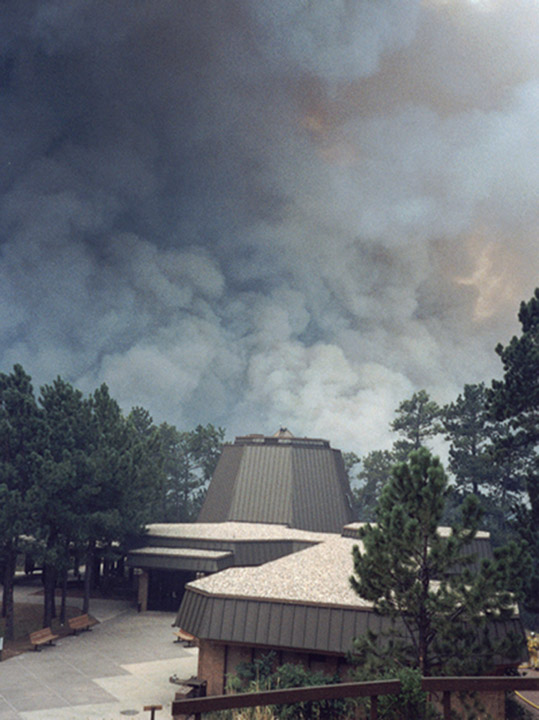History of Jasper Fire in Timeline

The Jasper Fire, the largest wildfire in both South Dakota and Black Hills history, raged from August 24 to September 25, 2000. Consuming 83,508 acres in the southern Black Hills, the fire devastated Jewel Cave National Monument, burning over 90% of its land. More than two decades later, efforts to restore the natural vegetation within the burn scar are still underway.
1988: Westberry Trails Fire
The unsolved 1988 Westberry Trails Fire in Rapid City, South Dakota, which destroyed 15 homes, was investigated for potential links to Janice Stevenson.
1994: Controlled Burns Conducted
Controlled burns were conducted in 1994 to reduce underbrush in Jewel Cave National Monument, a practice that would later prove crucial in mitigating the spread of the Jasper Fire.
1999: Controlled Burns Conducted
Controlled burns were conducted in 1999 to reduce underbrush in Jewel Cave National Monument, a practice that would later prove crucial in mitigating the spread of the Jasper Fire.
August 24, 2000: Jasper Fire Ignited
On August 24, 2000, Janice Stevenson accidentally ignited the Jasper Fire near Jewel Cave while carelessly discarding a lit match.
September 25, 2000: Jasper Fire Contained
The Jasper Fire, the largest wildfire in both South Dakota and Black Hills history, was contained on September 25, 2000, after burning 83,508 acres.
May 2001: Plea Agreement and Reversal
Initially, Stevenson agreed to a plea deal, but when she failed a polygraph test regarding the Westberry Trails Fire, the prosecution sought a harsher sentence.
2001: Arson Conviction and Sentencing
In 2001, Janice Stevenson pled guilty to second-degree arson for starting the Jasper Fire and received a 25-year prison sentence.
2002: Sentence Upheld
Stevenson's appeal against her 25-year sentence was rejected by the South Dakota Supreme Court in 2002.
2002: Reforestation Project Initiated
The Jasper Fire Area Tree Planting Project began in 2002, aiming to restore the forest by planting 150,000 saplings annually across 400 acres.
2022: Vegetation Regrowth Assessment
A 2022 report revealed that almost half of the most severely burned areas from the Jasper Fire showed minimal to no vegetation regeneration.
2024: Ongoing Restoration Efforts
As of 2024, efforts to restore natural vegetation within the Jasper Fire burn scar are still ongoing.